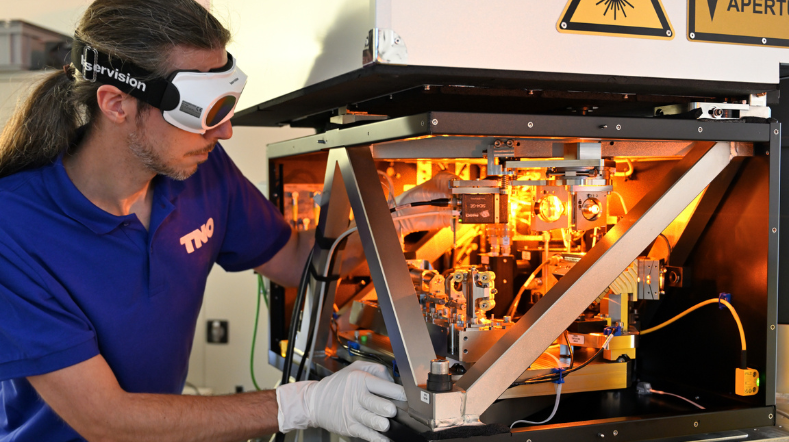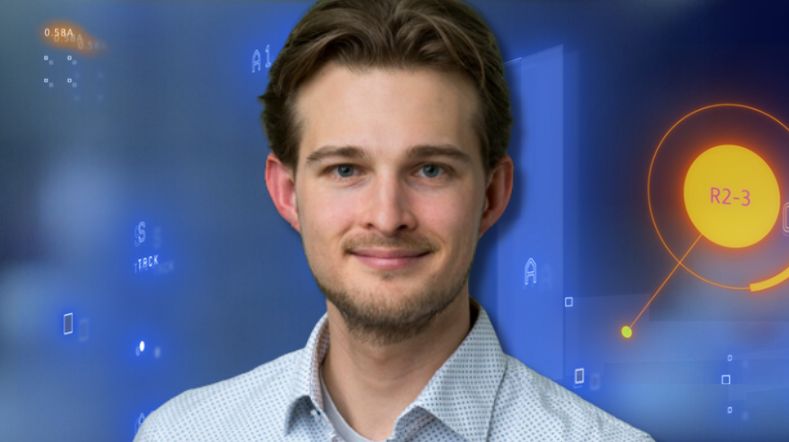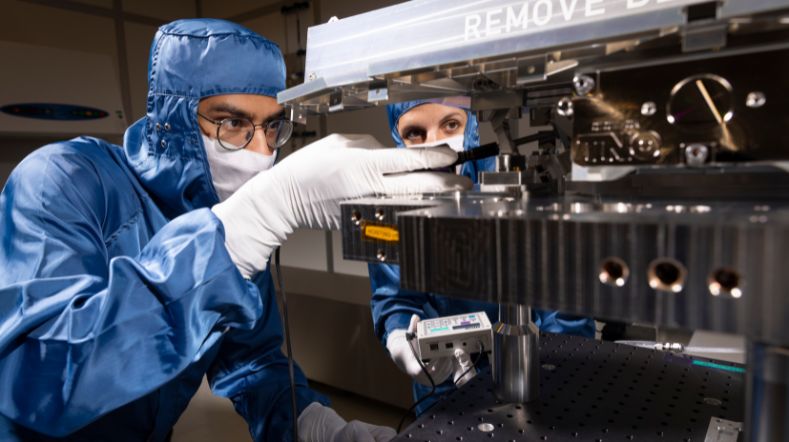
Equipment and systems for exploring the universe
For decades, humans have been engaged in exploring and mapping the universe using satellites. We can now see very far into space, with the help of complex equipment. Discover the important contributions we make to exploring and mapping the universe.
Space missions
Observations of space can answer major questions about the origin, structure, and evolutionary history of our galaxy and the universe. For missions in space, you need reliable and stable systems with the capacity to exchange huge amounts of data. TNO is a leader in this field.
Data transmission for space missions
Optical communication is a solution for exploring the universe. Laser satellite technology, which we’re already working on close to Earth, can also increase the download speed of data from further away in space. For example, we expect to have technology ready by 2023 for data exchange with the moon via a lunar communication terminal. Ultimately, we want to move towards a comprehensive data transfer network for space missions far out in space.
James Webb Telescope
The James Webb Space Telescope (JWST) will help answer major questions in astronomy, such as the earliest history of the universe, including the birth of the first galaxies nearly 13.6 billion years ago.
About the James Webb Telescope
The JWST was launched on 25 December 2021 and was developed and built in collaboration with NASA, ESA, and the Canadian Space Agency CSA. TNO provided the optical design for the mid-infrared instrument MIRI. The JWST can use MIRI to observe the furthest galaxies, newborn stars, and barely visible comets.
The JWST focuses on infrared radiation, because radiation from cold and distant celestial bodies has a longer wavelength than visible light. An additional advantage is that infrared radiation is relatively good at penetrating cosmic dust clouds, enabling us to see what lies beyond them.
About the LISA telescope
Astronomers use gravitational waves to observe events in the universe, such as collisions between stellar black holes or neutron stars. Observatories on Earth can only detect gravitational waves up to a length of 10,000 kilometres. For this reason, supermassive black holes, for example, remain invisible.
Measuring arms
LISA will have measuring arms 2.5 million kilometres long, enabling it to detect much longer wavelengths. The measuring arms are formed by laser beams between 3 satellites (see image). With these measuring arms, LISA will detect gravitational waves through minute changes in the distances between them.
TNO technology
The satellites are 2.5 million kilometres apart. They move continuously in relation to each other, within a margin of about 10,000 kilometres. This does not interfere with the measurements, but the laser beams have to be adjusted accordingly. We’re developing mechanisms that can focus with milli-arcsecond accuracy under extreme space conditions. This accuracy corresponds to pointing out a penny on the Eiffel Tower from the Netherlands.
BAM OMA specifications
BAM OMA is an optical system of two separate units constructed with flat mirrors, beam splitters, fibre optic collimators, and periscopes. This system is extremely complex and essential to the success of the mission.
Stability thanks to silicon carbide
The astrometric measurements of the Gaia satellite are accurate to 24 micro-arcseconds (at 15 magnitude). This is comparable to measuring the diameter of a human hair at a distance of 1,000 kilometres. The BAM OMA therefore needs to be very stable. To achieve this, the optical system is constructed of silicon carbide, which ensures ultra-high stability. The components were developed together with Eindhoven University of Technology and with support from the Netherlands Space Office.
The advantages of silicon carbide:
- high stiffness at low weight (high specific stiffness)
- high thermal conductivity
- low coefficient of thermal expansion
- good isotropy (behaviour is the same in all directions).
Get inspired
Optics


Time setter story: Max van Strien


TNO technology selected for Secondary Mirror of W. M. Keck Observatory


Time setter story: Benjamin Brenny


Space systems engineering


